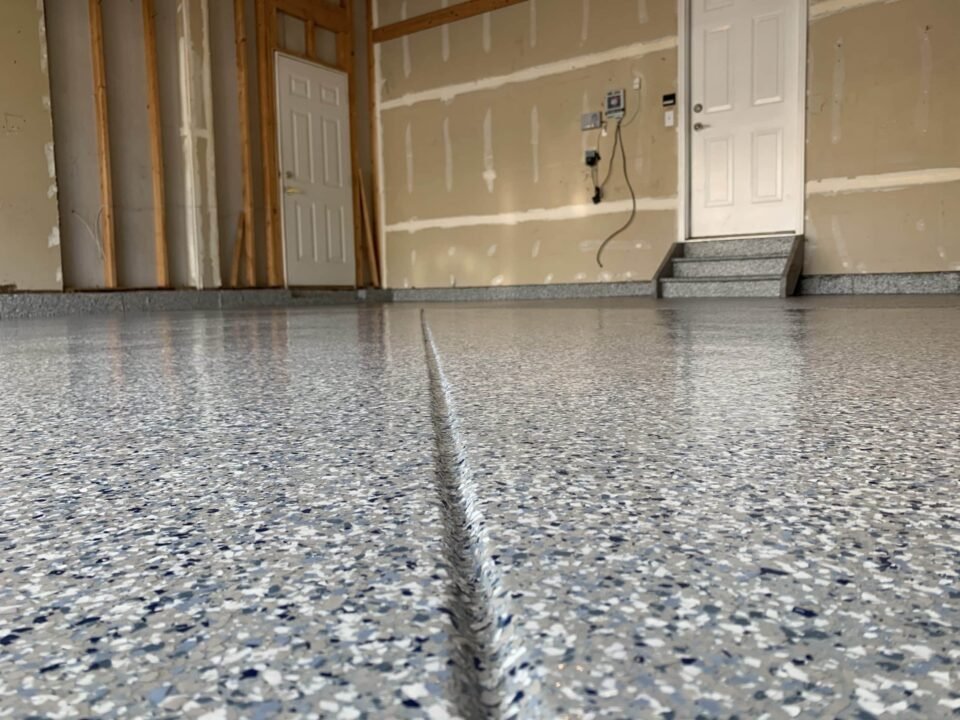Epoxy flooring has become a popular choice for both residential and commercial spaces due to its durability, versatility, and aesthetic appeal. This type of flooring is known for its ability to withstand heavy traffic, resist chemicals, and provide a sleek, seamless finish. In this blog, we will delve into the benefits of epoxy flooring, the application process, and tips for maintaining your epoxy floors.
What is Epoxy Flooring?
Epoxy flooring is a surface coating that consists of multiple layers of epoxy, a thermosetting resin, applied to the floor. When the epoxy resin and hardener are mixed, they form a strong, rigid plastic material that bonds exceptionally well to most base layers. This results in a durable, high-performance surface that can last for many years.
Benefits of Epoxy Flooring
- Durability
- Epoxy floors are incredibly durable and can withstand heavy foot traffic, machinery, and even vehicle loads. This makes them ideal for commercial and industrial settings, such as warehouses, garages, and factories.
- Chemical Resistance
- Epoxy flooring is resistant to a wide range of chemicals, including oil, gasoline, bleach, and cleaning agents. This makes it a perfect choice for environments where spills and chemical exposure are common.
- Easy Maintenance
- Epoxy floors are seamless and non-porous, making them easy to clean and maintain. Dirt, dust, and spills can be quickly wiped away, and the surface can be easily swept or mopped.
- Aesthetic Appeal
- Available in a variety of colors, finishes, and patterns, epoxy flooring can be customized to match any decor. Whether you prefer a glossy finish, metallic look, or a more understated matte, epoxy floors can be tailored to your taste.
- Safety Features
- Epoxy flooring can be enhanced with anti-slip additives, making it a safer choice for areas prone to wet or slippery conditions. Additionally, the high-gloss finish can improve visibility in poorly lit spaces by reflecting light.
- Cost-Effective
- Given its durability and low maintenance requirements, epoxy flooring can be a cost-effective long-term solution. It reduces the need for frequent repairs or replacements compared to other flooring options.
The Epoxy Flooring Application Process
- Surface Preparation
- Proper surface preparation is crucial for a successful epoxy flooring application. The floor must be clean, dry, and free of any oil, grease, or debris. This often involves grinding or shot blasting to create a rough surface for better adhesion.
- Priming
- A primer is applied to the prepared surface to ensure strong adhesion between the concrete and the epoxy layers. This step helps to seal the floor and prevent air bubbles from forming in the epoxy.
- Mixing and Application
- The epoxy resin and hardener are mixed according to the manufacturer’s instructions. The mixture is then poured onto the floor and spread evenly using a roller or squeegee. Multiple layers may be applied depending on the desired thickness and finish.
- Curing
- Once applied, the epoxy needs time to cure and harden. This process can take anywhere from 24 to 72 hours, during which the floor should be kept free from traffic and debris.
- Finishing Touches
- After the epoxy has fully cured, additional finishes such as anti-slip additives or decorative flakes can be applied. These finishes not only enhance the appearance but also add functionality to the floor.
Tips for Maintaining Epoxy Floors
- Regular Cleaning
- Sweep and mop your epoxy floors regularly to remove dirt and debris. Use a mild detergent and water for routine cleaning. Avoid using abrasive cleaners or harsh chemicals that can damage the surface.
- Immediate Spill Cleanup
- Clean up spills as soon as they occur to prevent staining or damage to the epoxy coating. Epoxy’s non-porous nature makes it easy to wipe away most spills with a damp cloth.
- Protective Measures
- Place mats or rugs at entryways to reduce the amount of dirt and grit that can be tracked onto the floor. Use protective pads under heavy furniture or equipment to prevent scratches or dents.
- Periodic Recoating
- Over time, high-traffic areas may show signs of wear. Consider periodic recoating to maintain the appearance and integrity of your epoxy floors. This can extend the lifespan of the flooring and keep it looking new.
- Addressing Damage
- If you notice any chips, cracks, or other damage, address them promptly. Small repairs can prevent more extensive damage and ensure the longevity of your epoxy flooring.
Final Words
Epoxy flooring offers a perfect blend of durability, aesthetics, and ease of maintenance, making it a popular choice for both residential and commercial spaces. Whether you’re looking to upgrade your garage, warehouse, or living room, epoxy flooring can provide a stylish and long-lasting solution. By understanding the benefits, application process, and maintenance tips, you can enjoy beautiful and resilient floors for years to come.


